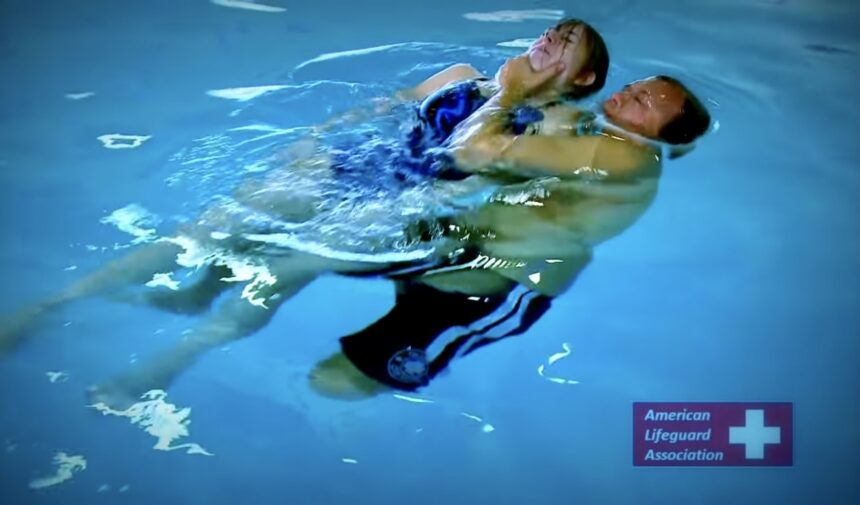Becoming a lifeguard is more than just mastering swimming techniques. It’s about learning life-saving skills, staying calm under pressure, and ensuring the safety of people in and around the water. If you’ve been thinking about pursuing this rewarding career, enrolling in a lifeguard class is the first step to make it happen. Whether you’re looking for a summer job or a lifelong career, a lifeguard certification opens doors to many opportunities.
At the forefront of lifeguard training is the American Lifeguard Association (ALA), a reputable organization that provides high-quality lifeguard classes designed to prepare candidates for real-world emergencies.
What to Expect in a Lifeguard Class
A lifeguard class typically covers a wide range of skills, from swimming endurance to first aid and emergency response. Here’s a breakdown of what a standard course might involve:
- Swimming Proficiency: Lifeguards must be strong swimmers. Most lifeguard classes start with a swimming test to ensure that students meet the necessary standards. You will need to swim specific distances (usually 300 meters) and demonstrate various strokes.
- CPR/AED and First Aid: One of the most important aspects of lifeguard training is learning how to perform CPR and use an AED (Automated External Defibrillator). These skills are critical for saving lives, especially in cases of drowning or cardiac arrest.
- Water Rescue Techniques: Lifeguard classes teach several water rescue techniques, including how to approach a distressed swimmer, how to use a rescue tube, and how to safely pull someone out of the water without putting yourself at risk.
- Teamwork and Communication: Lifeguards often work in teams, so effective communication is key. You’ll learn how to coordinate with fellow lifeguards, manage crowds, and handle emergencies with calmness and authority.
- Safety Protocols: Understanding how to prevent accidents is just as important as knowing how to respond to them. Lifeguard training also includes learning water safety rules and best practices for keeping the pool or beach environment safe.
- Simulated Scenarios: Throughout the class, you will participate in drills and simulations that mimic real-life emergencies. These practical exercises help you get comfortable with the skills you’re learning and give you a taste of what to expect once you’re on duty.
The American Lifeguard Association’s Role in Lifeguard Training
The American Lifeguard Association (ALA) is a trusted name in the lifeguard training industry. With years of experience in certifying lifeguards across the country, the ALA offers comprehensive courses that meet national standards for safety and effectiveness.
Here’s why ALA is a great choice for your lifeguard certification:
- Experienced Instructors: The American Lifeguard Association hires only certified and experienced instructors who have firsthand experience working as lifeguards. Their insight and knowledge provide students with practical tips and a deeper understanding of their role.
- Flexible Training Options: The ALA offers both in-person and blended courses (a mix of online and hands-on training) to fit your schedule. This flexibility ensures that even the busiest individuals can complete their certification.
- Widely Recognized Certification: A certification from the American Lifeguard Association is recognized nationwide. Whether you’re looking for a job at a local pool, beach, or waterpark, employers will know that you’re qualified.
- Ongoing Support: After completing your lifeguard class, ALA continues to support you with recertification courses, additional training opportunities, and resources to help you maintain your skills.
Why Enroll in a Lifeguard Class?
Choosing to take a lifeguard class opens doors to many opportunities, both personal and professional. Here are a few reasons why you should consider enrolling today:
- Gain Life-Saving Skills: Lifeguards are trained to respond quickly in emergencies, preventing accidents, and saving lives. Whether you work at a community pool or a busy beach, your training equips you to make a real difference.
- Job Flexibility: Lifeguarding jobs are often seasonal, which makes them perfect for students looking for summer employment. However, there are also year-round opportunities in certain areas, especially at indoor pools, aquatic centers, and resorts.
- Stay Fit and Active: If you enjoy being in the water and staying active, lifeguarding is a great way to turn that passion into a job. You’ll spend your days swimming, moving, and keeping an eye on swimmers to ensure their safety.
- Build Leadership Skills: Lifeguards are responsible for the safety of others, which means you’ll need to develop strong leadership and communication skills. These qualities can be valuable in many areas of life, not just at the pool or beach.
- Opportunity for Growth: With experience, lifeguards can move into supervisory roles or even become instructors themselves. The American Lifeguard Association also offers advanced certifications for those looking to specialize in areas like waterfront safety or waterpark lifeguarding.
How to Enroll in an American Lifeguard Association Lifeguard Class
Enrolling in a lifeguard class with the American Lifeguard Association is easy. Simply visit their website, choose a course location near you, and register. Before signing up, make sure to review the prerequisites, which often include age requirements (usually 15 or older) and swimming proficiency.
Once you’ve completed the course and passed the final tests, you will receive your certification, allowing you to apply for lifeguarding jobs right away.
Summary
A lifeguard class is more than just a course; it’s a pathway to a rewarding career where you can make a difference every day. Whether you’re new to lifeguarding or looking to recertify, the American Lifeguard Association offers top-notch training that equips you with the skills you need to succeed. Don’t wait – take the plunge and enroll in a class today. Your future as a lifesaver is just one step away!







